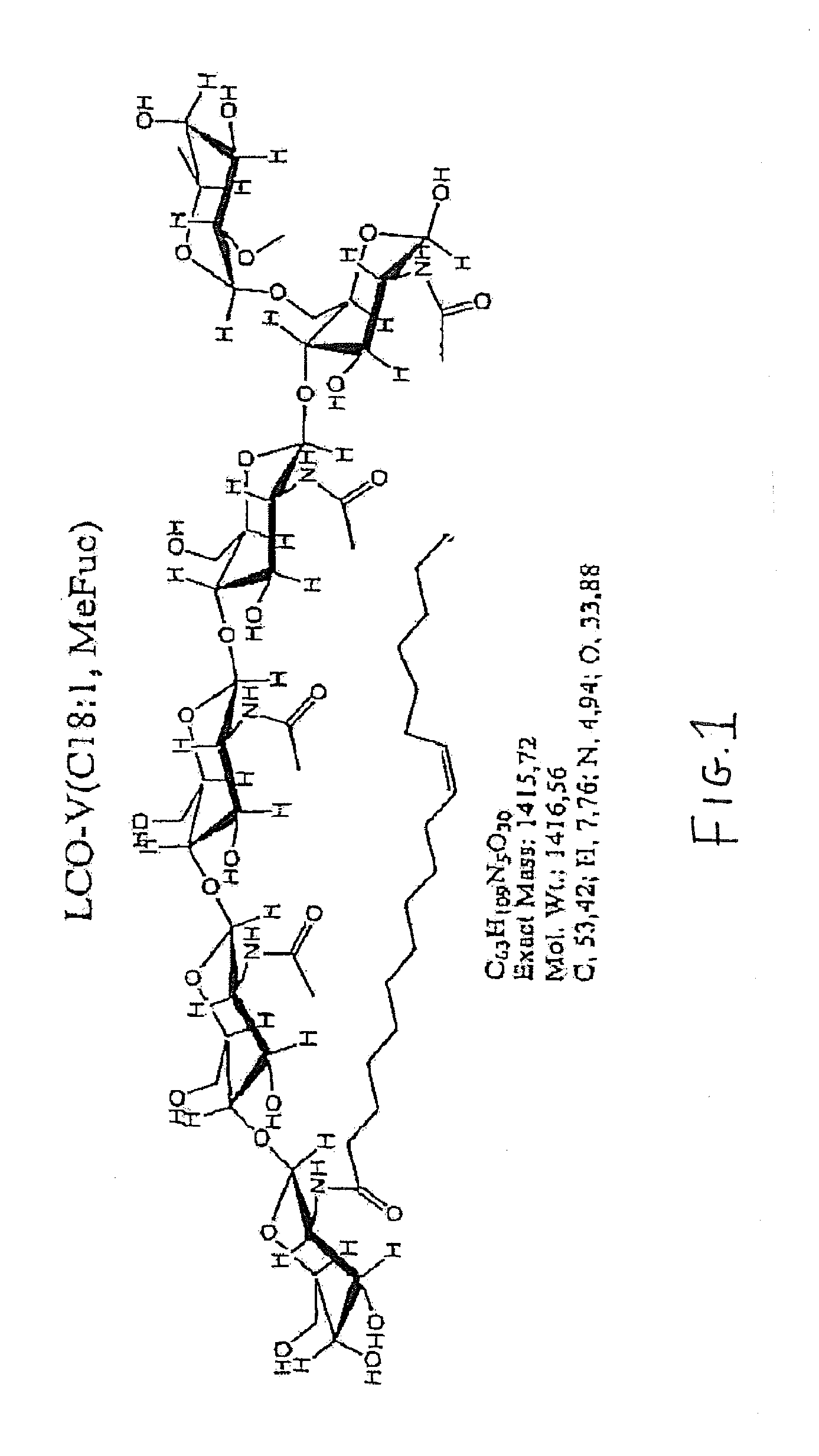Use of lipochito oligosaccharides and/or chito oligosaccharides in combination with phosphate solubilizing microorganisms to enhance plant growth
a technology of lipochito oligosaccharides and chito oligosaccharides, which is applied in the direction of animal corpse fertilisers, biocides, alkali orthophosphate fertilisers, etc., can solve the problems that essential elements cannot be readily taken up by plants, and achieve the effects of increasing plant yield, enhancing plant growth, and increasing root number
- Summary
- Abstract
- Description
- Claims
- Application Information
AI Technical Summary
Benefits of technology
Problems solved by technology
Method used
Image
Examples
Embodiment Construction
[0021]As used herein, “phosphate solubilizing microorganism” is a microorganism that is able to increase the amount of phosphorous available for a plant. Phosphate solubilizing microorganisms include fungal and bacterial strains. In embodiment, the phosphate solubilizing microorganism is a spore forming microorganism.
[0022]Non-limiting examples of phosphate solubilizing microorganisms include species from a genus selected from the group consisting of Acinetobacter, Arthrobacter, Arthrobotrys, Aspergillus, Azospirillum, Bacillus, Burkholderia, Candida Chryseomonas, Enterobacter, Eupenicillium, Exiguobacterium, Klebsiella, Kluyvera, Microbacterium, Mucor, Paecilomyces, Paenibacillus, Penicillium, Pseudomonas, Serratia, Stenotrophomonas, Streptomyces, Streptosporangium, Swaminathania, Thiobacillus, Torulospora, Vibrio, Xanthobacter, and Xanthomonas.
[0023]Non-limiting examples of phosphate solubilizing microorganisms are selected from the group consisting Acinetobacter calcoaceticus, A...
PUM
| Property | Measurement | Unit |
|---|---|---|
| time | aaaaa | aaaaa |
| time | aaaaa | aaaaa |
| compositions | aaaaa | aaaaa |
Abstract
Description
Claims
Application Information
 Login to View More
Login to View More - R&D
- Intellectual Property
- Life Sciences
- Materials
- Tech Scout
- Unparalleled Data Quality
- Higher Quality Content
- 60% Fewer Hallucinations
Browse by: Latest US Patents, China's latest patents, Technical Efficacy Thesaurus, Application Domain, Technology Topic, Popular Technical Reports.
© 2025 PatSnap. All rights reserved.Legal|Privacy policy|Modern Slavery Act Transparency Statement|Sitemap|About US| Contact US: help@patsnap.com



